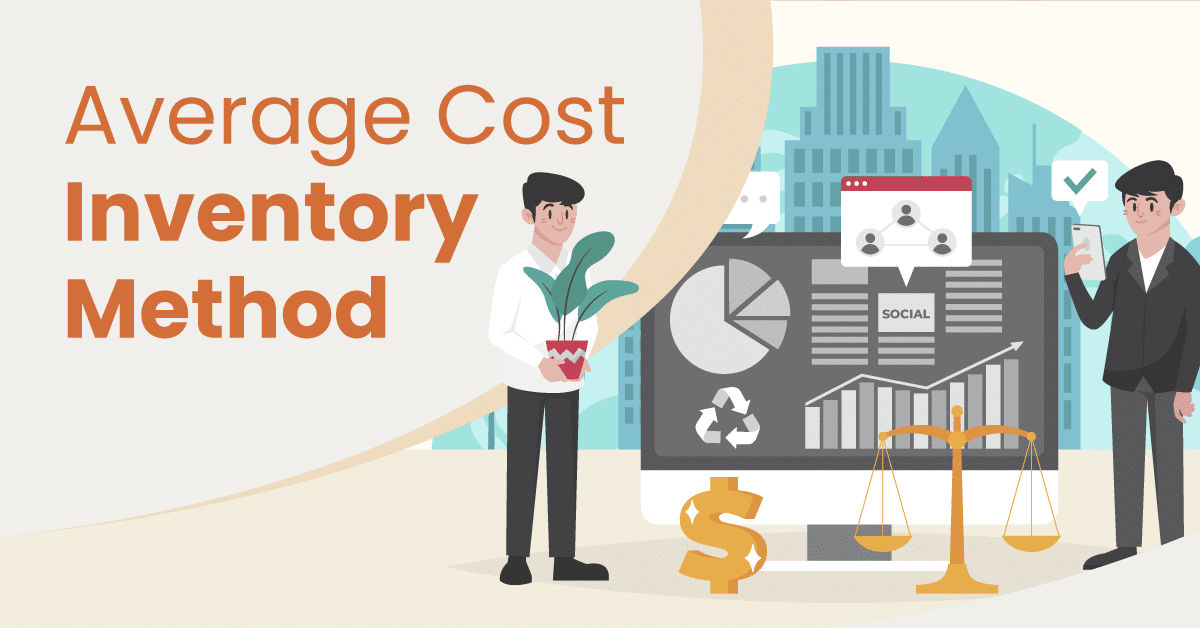
Inventory management is a critical aspect of any business, directly impacting profitability, financial reporting, and customer satisfaction. The average cost inventory method is one of the most vital methods used to track and value inventory.
This method balances simplicity and accuracy, making it a popular choice for businesses of all sizes and industries. This article will explore the average cost inventory method, its advantages, disadvantages, and its place in modern inventory management practices.
What is the Average Cost Inventory Method?
The average cost inventory method is a widely used accounting approach for valuing inventory. It calculates the average cost of all units in inventory to determine the cost of goods sold (COGS) and the value of the remaining inventory. This method is particularly suitable for businesses dealing with homogenous or interchangeable products.
Some Synonymous Terminology
Here are 10 terms that are synonymous with this method. These terms all refer to the practice of calculating the average cost of inventory items based on their unit costs over a specific period, which is then used for valuation and cost of goods sold calculations.
Different industries and businesses may use slightly different terminology and variations, but the underlying concept remains roughly the same.
- Weighted Average Cost
- Moving Average Inventory Method
- Mean Cost Inventory Method
- Rolling Average Inventory Method
- Weighted Mean Inventory Method
- Average Costing
- Simple Average Inventory Method
- Rolling Cost Inventory Method
- Continuous Average Inventory Method
- Weighted Average Inventory Valuation
Average Cost Method Formula
Here are the basic formulas and concepts behind the average cost method:
Accumulating Costs
As new inventory is acquired, add its cost to the accumulated total. As merchandise is sold or used, subtract the cost of those units from the accumulated total. The result is an ongoing average cost for all units in inventory.
This approach simplifies cost allocation by treating all units as if they were purchased at the same average cost. Simplifying the process makes it easier to calculate the cost of goods sold and determine the value of the remaining inventory.
Calculating the Average Cost
Divide the total cost of inventory by the total number of units in inventory. This calculation yields the average cost per unit.
The average cost per unit determines the cost of goods sold (COGS) for items sold during the accounting period and the value of the ending inventory. The formula is as follows:
- COGS = Number of Units Sold × Average Cost per Unit
- Ending Inventory Value = Number of Units in Inventory × Average Cost per Unit

Average Cost Method: Real World Examples
Imagine a liquor store that stocks various brands of wine. Initially, the store purchases 10 bottles of a particular wine brand at $20 per bottle. Later, they acquire 5 more bottles of the same brand at $22 per bottle. Under the average cost method, the store combines these purchases to calculate an average cost per bottle: ($20 x 10 + $22 x 5) / (10 + 5) = $20.67 per bottle.
As sales occur, use the average cost to calculate the cost of goods sold (COGS). For example, if the store sells 6 bottles of this wine, the COGS would be 6 bottles x $20.67 = $124.02.
Consequently, the remaining inventory is still valued at the average cost of $20.67 per bottle, regardless of the actual purchase prices. This method simplifies inventory valuation, especially when dealing with various price changes. It also ensures a more consistent cost allocation for the liquor store’s financial reporting and pricing decisions.
Advantages of the Average Cost Inventory Method
The average cost inventory method presents several advantages for certain types of businesses:
Simplicity
Compared to First-In, First-Out (FIFO) and Last-In, First-Out (LIFO), the average cost method requires fewer detailed records. It is the simplest format among inventory valuation methods because it involves straightforward calculations based on the average cost of all inventory units. It eliminates the need to track and identify individual unit costs, making it less administratively burdensome.
This simplicity makes it especially useful for businesses with extensive inventories of similar items. It provides a consistent and easily understandable method for financial reporting and inventory management.
Smoothing Fluctuations
By averaging the costs of all units in stock, the method effectively blends various purchase prices into a single, consistent value. This approach reduces the impact of individual price fluctuations, making it less sensitive to sudden cost increases or decreases.
As a result, it provides a more stable and predictable basis for calculating the cost of goods sold and the value of remaining inventory. This predictability mitigates the effects of market price volatility.
Compliance
The Average Cost Inventory Method is accepted under generally accepted accounting principles (GAAP) and international financial reporting standards (IFRS).
This compliance can be crucial when seeking external financing or partnerships. GAAP provides a consistent framework for financial reporting. This framework makes it easier for small businesses to communicate their financial health to stakeholders and potential investors.
Also, since 2008, the IRS has allowed average cost inventory methods for accounting and reporting purposes as long as businesses remedy any discrepancies.
Ideal for Retailers With Homogeneous Products
The average cost inventory method is particularly well-suited for companies with homogenous or similar products. When a company deals with virtually identical products or consistent purchase prices, such as commodities or standardized goods, the average cost method simplifies inventory valuation.
Average Costing Disadvantages
As with any accounting method, this system comes with some shortcomings. Be sure to consider the following:
Inaccuracies in Fluctuating Markets
The average cost inventory method can introduce inaccuracies in fluctuating markets due to its reliance on historical purchase data. Numbers may need to reflect current market values accurately, potentially causing overvaluation or undervaluation of inventory.
This method can also lead to income statement distortions, either inflating or understating profits depending on cost trends. Failure to track specific costs for individual items can be problematic for businesses with unique or high-value items in inventory, affecting pricing and profitability decisions.
Potential for Mismatching
If inventory costs vary significantly over time, the average cost method may not accurately match the cost of goods sold with the corresponding revenue. The average cost inventory method has the potential for mismatching because it calculates a single average cost for all units in inventory, regardless of purchase date or price.
This can lead to a disconnect between the reported inventory value and the actual market value. The method may not accurately represent the cost of goods sold or the value of remaining inventory. Financial statements may misalign with the economic reality of a business’s inventory situation.
Inventory Distortions
In periods of rising costs, this method may undervalue inventory, leading to lower reported assets and potential inventory shortages. Conversely, falling prices can overstate the value of merchandise, potentially inflating assets and affecting financial ratios. This distorts the financial picture of a company’s inventory holdings.

Achieving More Accurate Inventory Management
Great POS inventory management software enhances accuracy by automating inventory processes, minimizing errors associated with manual data entry, and offering real-time tracking of sales and stock levels. POS systems integrate with technologies like barcode scanning and RFID for precise item identification, reducing miscounts and discrepancies.
Moreover, POS systems provide valuable data and analytics, enabling businesses to optimize inventory, identify sales trends, and make informed decisions for better accuracy in inventory management.
Real-time Data
Many businesses now have access to real-time data, allowing them to calculate more accurate average costs and make timely decisions regarding pricing and restocking. Real-time data helps with counting inventory costs by providing up-to-the-minute information about the status of items, including quantities and current values.
This pinpoint accuracy allows businesses to make more accurate calculations for the cost of goods sold (COGS) and the value of remaining inventory. Real-time figures also help identify discrepancies or errors quickly, enabling timely corrections and reducing the risk of financial inaccuracies in inventory valuation.
Regular Physical Counts to Counter Market Volatility
Some businesses supplement the average cost method with regular physical inventory counts and adjustments to mitigate the inaccuracies associated with volatile markets. This process better identifies discrepancies and shrinkage from theft, spoilage, or data entry errors. By conducting regular physical counts and addressing disparities promptly, businesses can maintain more accurate inventory records, improving financial reporting and decision-making.
Inventory management headache?
KORONA POS makes stock control easy. Automate tasks and get a clear picture of your entire inventory.
Conclusion
The average cost inventory method is a versatile and widely accepted approach to inventory valuation. Its simplicity and ease of implementation make it an attractive option for businesses across various industries.
However, it is crucial for companies to carefully consider their specific inventory needs and the potential impact of market volatility when choosing this method. In an era of technological advancement, the ability to gather and analyze real-time data is a must.
KORONA POS offers the most comprehensive industry management software in the industry. Our system integrates with RFID tracking systems, accounting programs, and more.
Click the link below to learn more about our retail inventory solutions!
FAQs: Average Cost Inventory Method
The AVCO (Average Cost or Average Value of Cost) method of inventory is an accounting approach used to determine the cost of goods sold (COGS) and the value of remaining inventory. It calculates an average cost for inventory items by dividing the total cost of goods available for sale by the total number of units available. This method is often used to simplify inventory valuation, especially when dealing with items that have consistent or stable purchase prices over time.
To calculate the average cost of inventory, you add up the total cost of all inventory items on hand and divide it by the total number of units in inventory. Here’s the formula: Average Cost = Total Cost of Inventory / Total Number of Units in Inventory. This method provides a uniform cost basis for inventory items and is especially useful when purchase prices are relatively consistent.
Let’s say a retail store starts a month with 100 units of a product at $10 each and purchases 50 more units during the month at $12 each. To calculate the average cost of inventory, you add the total cost of beginning inventory and purchases, which is (100 * $10) + (50 * $12) = $1,000 + $600 = $1,600. Then, divide this total cost by the total number of units, which is $1,600 / 150 units = $10.67 per unit. This average cost is used for valuing inventory and calculating the cost of goods sold.












